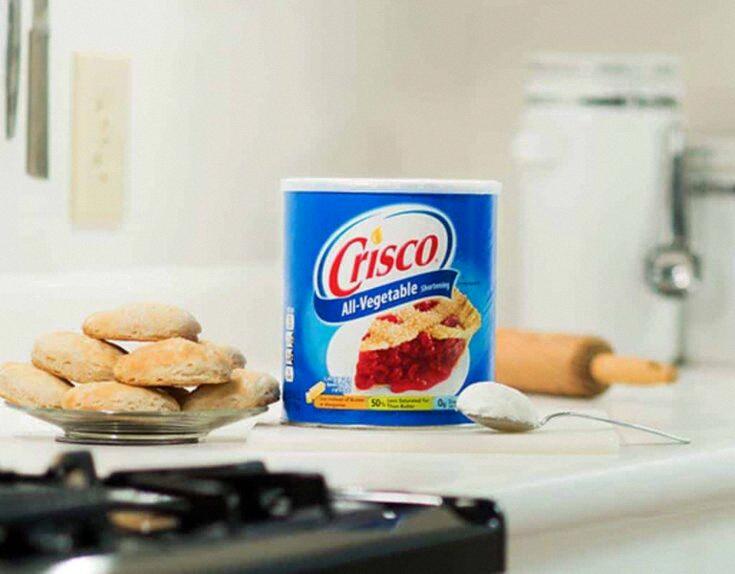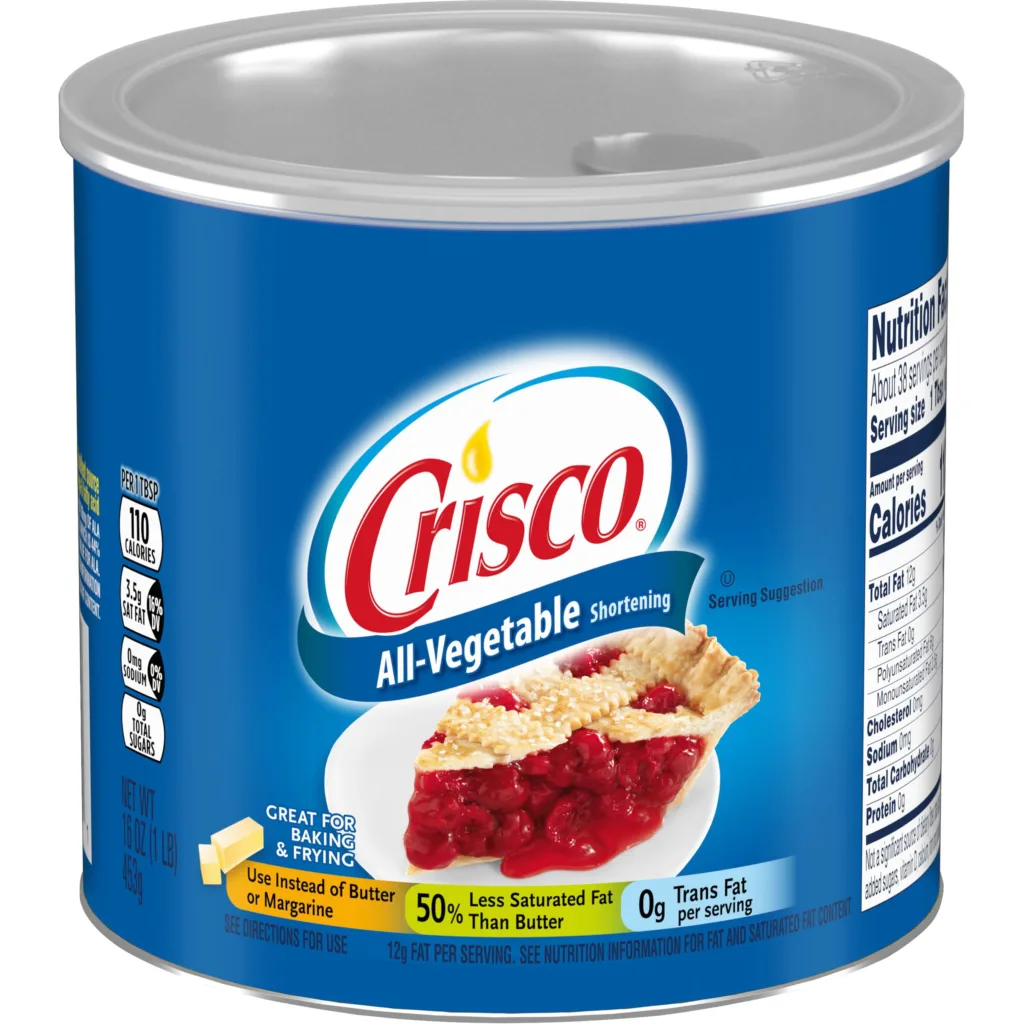If you’re a baker, you probably know that shortening is a key ingredient in many recipes. Whether it’s for making flaky pie crusts, fluffy biscuits or tender cakes, shortening is a versatile ingredient that can help you achieve the desired texture and flavor in your baked goods. But what happens when you have a container of shortening that’s been sitting in your pantry for a while? Does shortening go bad, and if so, how can you tell?
First of all, let’s start by clarifying what shortening is. Shortening is a type of fat that is solid at room temperature, typically made from vegetable oils such as soybean or cottonseed oil. It’s called “shortening” because it shortens gluten strands in dough, resulting in a more tender and crumbly texture. Shortening is also known for its high smoke point, which makes it ideal for frying and sautéing.
Now, let’s get back to the question at hand: does shortening go bad? The short answer is no, shortening doesn’t really expire. Unlike dairy products or fresh produce, shortening doesn’t spoil in the traditional sense. However, that doesn’t mean that shortening will stay fresh indefinitely. Over time, shortening can become rancid, which can affect the taste and quality of your baked goods.
Rancidity is a process that occurs when fats and oils are exposed to oxygen, light, and heat. This causes the fats to break down and develop an off-flavor and odor. Rancid shortening may also have a yellowish or brownish color and a grainy texture. If you notice any of these signs in your shortening, it’s probably time to toss it out.
To prevent your shortening from going rancid, it’s important to store it properly. Shortening should be kept in a cool, dry place away from light and heat sources. It’s also a good idea to write the date on the package when you first open it, so you can keep track of how long it’s been open. While shortening won’t necessarily go bad after its labeled expiration date, it’s best to use it within a few weeks or months of opening it for optimal freshness.
While shortening doesn’t technically expire, it can go rancid over time, resulting in an off-flavor and texture. To keep your shortening fresh, store it properly and use it within a reasonable amount of time. And if you ever suspect that your shortening may be past its prime, it’s always beter to err on the side of caution and replace it with a fresh container.
Using Shortening After the Expiration Date
Shortening, specifically Crisco, can be used for a few weeks past the printed expiration date if stored correctly. It’s important to note that shortening does not necessarily “expire” in the way that oter foods do, as it does not become unsafe to consume. However, the quality of the product may decline over time, resulting in a less desirable taste or texture. To ensure the longevity of your shortening, it’s best to store it in a cool, dry place, away from direct sunlight or heat sources. If you notice any signs of spoilage, such as a rancid odor or off-taste, it’s best to discard the product. as long as the shortening appears and smells fresh, it can still be used for a few weeks past the printed expiration date.

Source: eatdelights.com
Determining If Crisco Has Gone Bad
Crisco, like any other oil or fat, can go bad over time. The most common signs that Crisco has gone bad are changes in color, texture, odor, and taste. If you notice any discoloration or a change in texture, such as clumps or graininess, it’s a sign that the product is no longer fresh. Similarly, if you detect an off odor or taste, it’s likely that the Crisco has gone rancid and should not be used. To help keep track of how long a container has been opened, you may want to write the date on the package when you fist break the seal. It’s important to note that using rancid or spoiled Crisco can result in unpleasant flavors and odors in your cooking, and it can also be harmful to your health. Therefore, it’s always a good idea to check for signs of spoilage before using Crisco in your recipes.
The Risks of Consuming Expired Crisco Shortening
Expired Crisco shortening is not likely to cause any harm to your health if consumed. However, it is still not recommended to use expired shortening as it may have lost its texture and flavor, which can negatively affect the quality of your cooked food. When shortening expires, it may also contain harmful bacteria or mold, which can cause food poisoning or other health issues if consumed. Therefore, it is always best to check the expiration date on the product packaging and discard any expired shortening to ensure the safety and quality of your cooking.
The Effects of Using Expired Shortening
If you use old or rancid shortening, it won’t taste good, and you may experience digestive upset such as nausea, vomiting, diarrhea, or stomach cramps. However, the more significant risk associated with using old shortening is its potential long-term health effects. Rancid oils have been linked to chronic inflammation, which is a risk factor for heart disease, cancer, and other chronic conditions. Additionally, rancid shortening and lard can harbor harmful bacteria that may cause food poisoning, leading to symptoms such as fever, vomiting, and diarrhea. Therefore, it is recommended to aways check the expiration date of your shortening and avoid using it past its expiration date or when it starts to develop an off-odor, flavor, or appearance.
What to Do With Old Crisco
If you have old Crisco that you no longer want to use for cooking or baking, there are still several ways you can make use of it. One option is to use it as a lubricant for squeaky hinges, locks, or other mechanical parts. Simply apply a small amount to the affected area and work it in until the squeak disappears.
Another option is to use Crisco as a natural insect repellent, particularly for cockroaches. Mix a small amount of Crisco with boric acid and sugar, and place the mixture in areas where you’ve seen cockroaches. The boric acid will kill the insects, wile the Crisco and sugar will attract them to the bait.
Crisco can also be used as a “magic” letter bag, which is a fun activity for kids. Simply place a small toy or trinket inside a baggie filled with Crisco, and have the child manipulate the bag until they can retrieve the item. It’s a fun and messy sensory experience!
Other uses for Crisco include shining headlights on your car, greasing pans for baking, or even using it as a lubricant for a Slip ‘N Slide. There are many creative ways to repurpose this versatile product, so don’t be afraid to get creative and experiment with different uses.

Appearance of Expired Shortening
Expired shortening typically has a darkened color, starting from a milky white and progressing to a yellowish hue as it ages. The texture of the shortening also changes, becming harder and potentially even grainy. In addition to visual changes, expired shortening can be identified by its distinct scent that may be described as musky or rancid. The flavor of the shortening will also be off, with a stale taste that can ruin any recipe it is used in. It is important to inspect shortening carefully before using it in cooking or baking, as consuming expired shortening can lead to food poisoning and other related health issues.
Does Shortening or Lard Expire?
Both lard and shortening can go bad. They are fat-based products and can spoil over time, especially if they are not stored properly. Lard typically lasts for a couple of months after its expiration date, while shortening can last for up to a year if it is unopened and stored in a cool, dry place. However, both can eventually go bad and should be discarded if they start to smell or taste rancid. Rancidity is the primary way that thse products spoil, and you can tell if they are rancid if they have a sour or soapy taste or smell like old paint or nail polish remover. To extend the shelf life of lard and shortening, it’s best to store them in a sealed container in a cool, dry place, away from heat and light.
Are Crisco and Shortening the Same?
Crisco is a brand name of shortening, and they are essentially the same thing. Shortening is a type of fat that is solid at room temperature and is commonly used in baking to create a flaky, tender texture in pastries, pie crusts, and cakes. Crisco was introduced in 1911 by the Procter & Gamble Company and has become a popular brand of shortening. While there are other brands of shortening available, Crisco has become a household name and is often used interchangeably with the term “shortening.”
Conclusion
While Crisco shortening does not technically expire, it is important to monitor its freshness to ensure quality and optimal taste. By properly storing the product and keeping track of the date it was opened, you can extend its shelf life for at least a few weeks past the printed date. However, if you notice any changes in color, appearance, odor or taste, it is best to discard the shortening as it may have gone bad. While using spoiled shortening may not necessarily cause harm, it can certainy ruin the taste of any cooked item. So, it’s always better to be safe than sorry and check your Crisco shortening before using it in your favorite recipes.
